How to Buy the Right Backpacking Tent
Backpacking tents come in many sizes and shapes. Here are some tips for choosing a tent that will keep your backcountry nights comfortable.
HOW IMPORTANT IS WEIGHT WHEN CHOOSING A TENT?
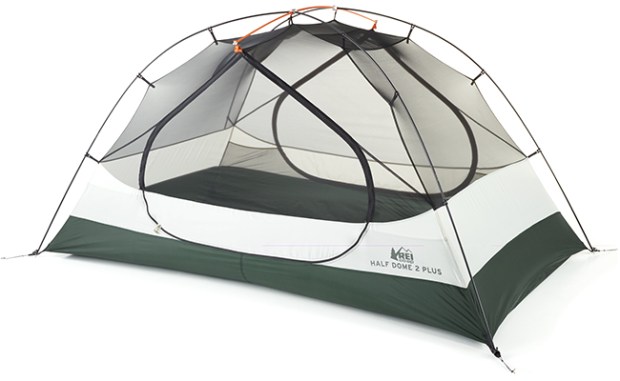
A backpacking classic that remains a good value, the 2017 two-door REI Half Dome 2 Plus Tent ($199, rei.com) pitches quickly and easily (even on dark, rainy nights), thanks to a hubbed-pole system, and it holds up in wind as well as most competitors. It boasts a roomy 38 square feet of floor space and a 42-inch peak height, plus vertical walls that create more headroom. Tradeoff: At a little more than 5 pounds, it’s almost twice the weight of the lightest two-person freestanding tents, and its’ bulky to pack. 5 lbs. 1 oz.
Considering all the hours and trail miles you’ll spend carrying your tent, you should pay careful attention to its weight. Look for the lightest gear that performs the way you want it to — and that you can afford.
For example, an ultralight tent is a great pick to keep weight down, but it might not be as spacious or as strong in wind as you need. Be sure you understand the tradeoffs of each kind of tent and get what you need.
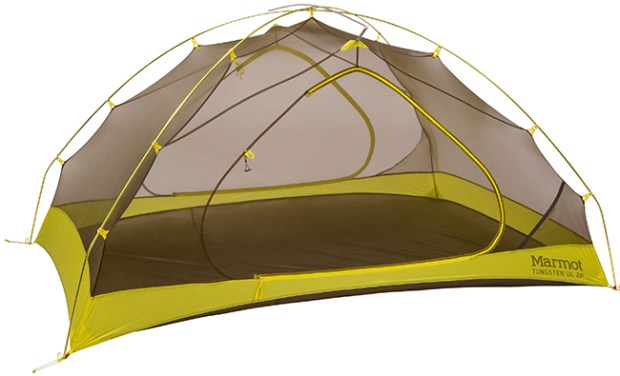
When you want a lightweight tent that won’t tap into your savings too much, look at the Marmot Tungsten UL 2P ($299, marmot.com). Barely north of 3 pounds, this two-door tent delivers more floor area than almost any comparable freestanding, three-season, two-person tent — and costs less than virtually all competitors in the category. Pre-bent poles maximize headroom, color coding makes pitching a snap, large doorways make coming and going easy, and lots of mesh ventilates the interior well — even with the doors sealed tightly. 3 lbs. 4 oz.
Consider questions like:
Will you typically spend most of each day on the trail? Consider opting for a lightweight tent over one with luxurious extras.
Will you be spending most of your day in camp? Think about comfort and convenience features like gear pockets, extra doors or a cool design.
Will there be severe weather? Go for a tent that will keep you dry in rain and stand up to extreme wind.
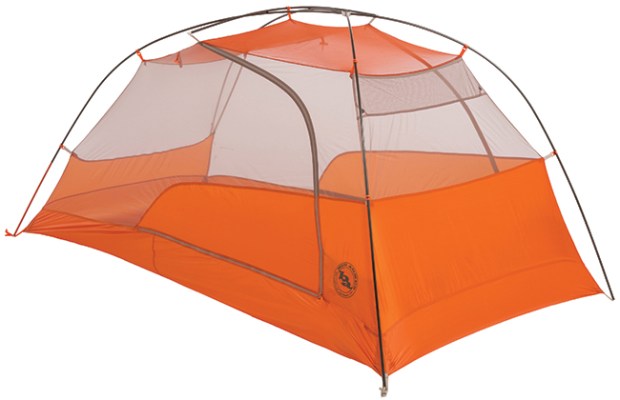
In the exclusive club of freestanding tents with two doors and vestibules that weigh fewer than 3 pounds, the Big Agnes Copper Spur HV UL 2 ($450, bigagnes.com) stands out for its balance between low weight, good living space and ventilation, and strength. The secret lies in a 40-inch peak height, 88-inch length, large doorways and a hubbed-pole structure that creates steep walls, making the tent feel roomier than its 29 square feet. 2 lbs. 12 oz.
LOOK AT THE TENT’S DETAILS
The first step in gear shopping is reading reviews and looking at products online. Tent specs can tell you a lot when you know what they mean. Here are some frequently used keywords.
Capacity: Backpacking tents usually range from one- to four-person models. Be careful; sizes aren’t universal. You and your buddy might not sleep comfortably in a two-person tent.
Square footage: This number will tell you how much interior space you’ll have. For instance, less than 28 square feet might feel snug in a two-person tent, while more than 30 should offer some elbow room.
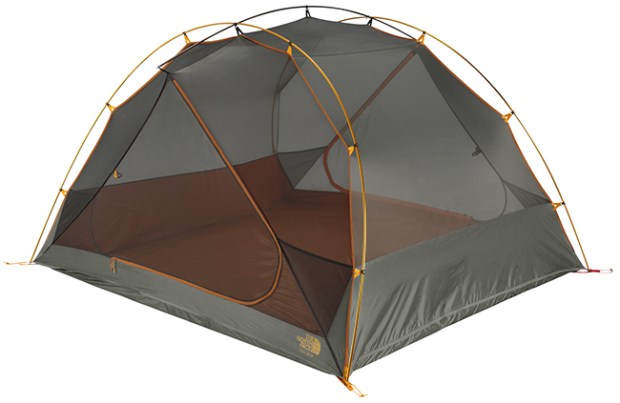
For a family hitting the trail on multiday hikes, there’s hardly a better value than The North Face Talus 4 ($299, thenorthface.com). With two doors and vestibules that will store boots and mid-sized packs, this freestanding four-person shelter has durable but lightweight poles and a fully seam-taped canopy and floor — and weighs fewer than 7 pounds. The 50-inch peak height affords plenty of headroom. Tradeoff: The 50 square feet of floor space is a tight fit for four. 6 lbs. 10 oz.
Peak height: Less than 40 inches might mean taller people will brush their head against the ceiling.
Vestibules: Not only will these porch-like sheltered areas double as storage space for wet gear and packs, but they also provide the best design feature for preventing condensation inside: cross-ventilation.
Freestanding: This makes it easier to pitch (and shake out dirt), but can also add weight. Remember that many non-freestanding tents are just as sturdy when properly staked and guyed out.
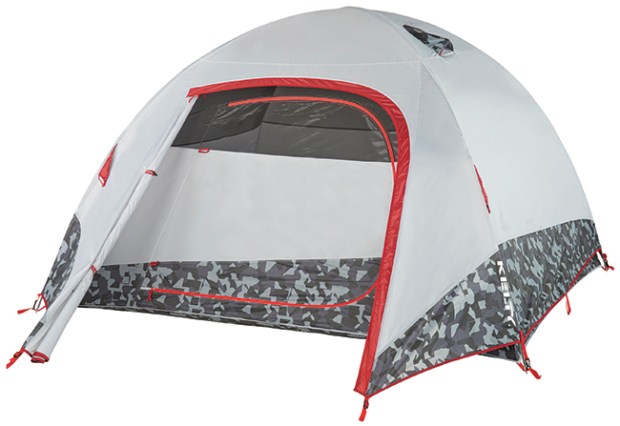
If car camping in pleasant weather is the plan, there’s no reason to spend a bundle on a tent. The freestanding four-person Kelty Discovery 4 ($150, kelty.com) sets up easily with two classic dome-style crossing poles and clips, has a generous 56 square feet of floor space and offers a 58-inch peak height. Unlike many inexpensive, big family-camping tents, it has a seam-sealed, full-coverage rainfly — so you won’t get wet if it rains — and it’s reasonably light and compact for this category. Tradeoff: It has only one door. 10 lbs. 7 oz.
GET INSIDE THE TENT
Just like you shouldn’t buy boots or a backpack without trying them on first, be sure to get inside a tent before buying it. After doing some research and creating a short list of your preferred tent models, visit stores that carry them. Pitch each tent. Sit and lie down inside them — ideally with your tentmate(s) — to test it.
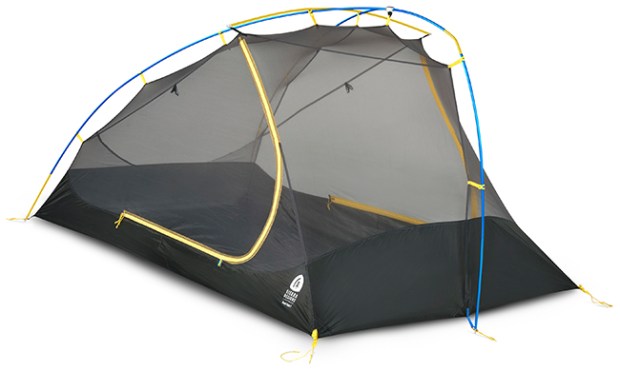
The Sierra Designs Sweet Suite 2 ($370, sierradesigns.com) is the ideal combination of lightweight and roomy. The semi-freestanding tent’s unique Y-pole setup means the tent provides better-than-average interior space — nearly 30 square feet and a peak height of 40 inches. There are also vestibules in front of both doors, offering another 18 square feet of exterior storage space for wet or stinky gear. Even better: All this weighs only 3 lbs. 10 oz.
I’m looking for a light, all-weather 2-man pop-up tent that packs small.
Help me, Gear Guy; your my only hope.
really helpful and smart
I just began backpacking, does anybody know any good tents that are lightweight but can fit two people?
Mark Anders is the Gear Guy, right?
Just became boy scout!
Need a new bag, not to pricy, roomy, and has hydration.
Any recommendations?
thunks!
#Bag
you should check out the Kelty red cloud 90.
I would suggest an ALPS Mountaineering Meramac 3 tent. It’s a great two-man tent made of durable material. It is a breeze to pop-up and take-down with the plastic hooks instead of the sleeves for the rods you normally get on cheaper Tents. Last summer, my son endured two days of torrential rains at summer camp and the tent kept him and his gear bone dry. The Meramac tent is also reasonably priced.
I own 5 different types of tents and still love the Eureka Timberline 4 Outfitter best. Great in a storm situation. I pack it with 2 vestibles for maximum room.
My new Scout needs a good tent to keep him dry.. reasonable price – can you recommend?
@ Ranger97: I have a Eureka Solitaire Solo tent which is essentially the sameas the Spitfire except for the Solitaire’s poles are made from fiberglass. It is a very good and lightweight tent.
Where did you buy the bag?
LT ME KNW!!!
#Thanks